Aerodynamics, weight reductions and cleaner, greener fuels are the driving forces within most of the world’s motor industry. Making its motorcars rip through still air, with owl-like silence and falcon-like speed have been long-standing remits for Audi, the ‘Four-Ringed’ brand of the Volkswagen Group. It is a massive pursuit, as neither of the birds mentioned are reliant on satisfying the demands of traction and a positive connection to terra-firma at the same time.
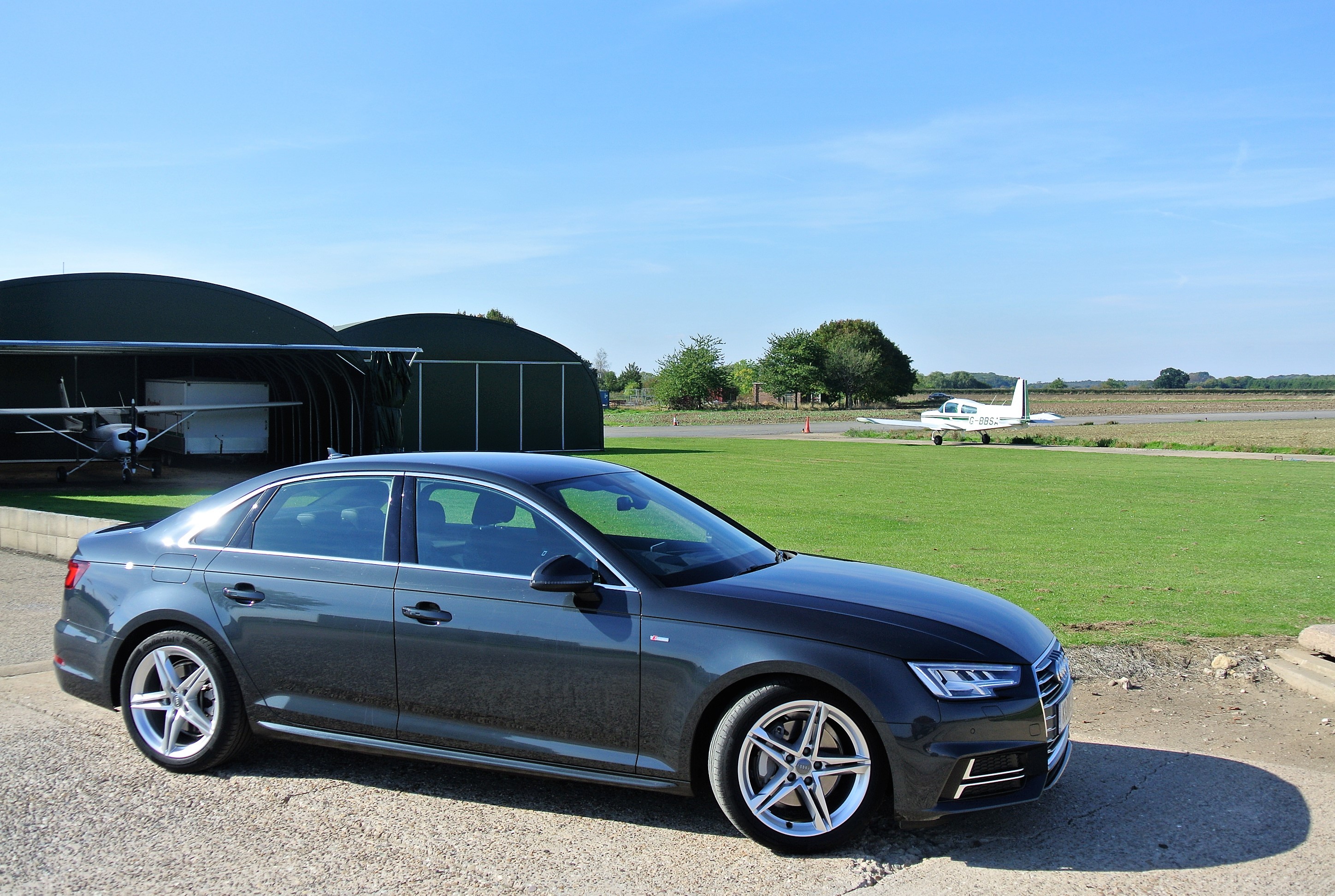
In the mid-to-late 1970s, Audi used to highlight the 0.30Cd factor of its 100 model, the equivalent of today’s Audi A6, with an applique in the rear three-quarter windows. Yet, sharing a similar footprint to the 100, today’s A4 boasts a remarkable 0.24Cd, a drag factor that could only be improved by removing the car’s door mirrors, blanking off the radiator and filling-in the wheel-arches, none of which are recommended modifications for a volume midfielder. The A4 is slippery indeed.
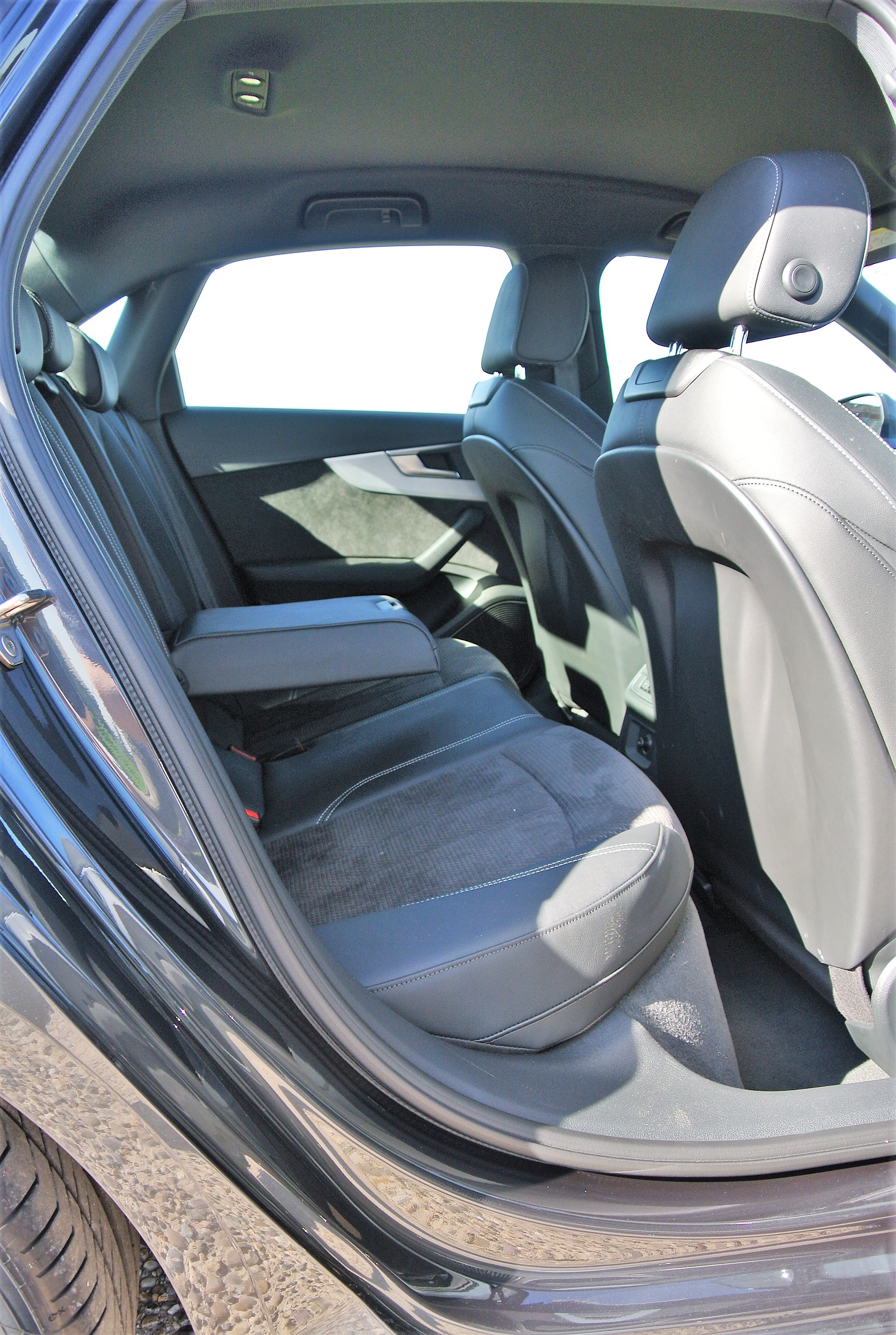
For a medium sector saloon that is 4.726m in length, the A4 has grown over the years, partly in response to criticism that earlier versions lacked rear seat space. While we can point fingers at Teutonic arrogance, especially in the car industry, it is fair to state that the manufacturers do listen and, while hardly in the limousine league of the Skoda Superb, the A4 is actually very spacious, within its well-considered class dimensions.
The entire VW Group is very efficient at playing the lineage card. Park a 2018 A4 alongside any of its forebears and the distinctive lines of derivative design are abundantly clear. While the Bauhaus influences of the 1990s have been refined by more chiselled styling accents almost 30 years later, the A4 is recognisable importantly, as a stand-out automotive design exercise. It is well-proportioned and very handsome.
Thanks to ‘keyless-go’, with fob in pocket, access to its conservative acres of grey interior involves little more than a tug on the driver’s door handle. However, prior to depressing the start:stop button on the centre console, you appreciate the alloy trim fillets that lift the mood and enhance the interior detailing. Electric operation in Ultra S-Line specification, ensures that the rake, reach and height of both leather and Alcantara-clad front seats, which costs an extra £800, can be altered to suit an immense array of driver types. Sadly, the driver’s seat in the test car stopped being adjustable for some reason that I am sure a visit to the nearest Audi dealership would resolve in a trice. The rake and reach range movement of the steering column helps to achieve the best driving position.
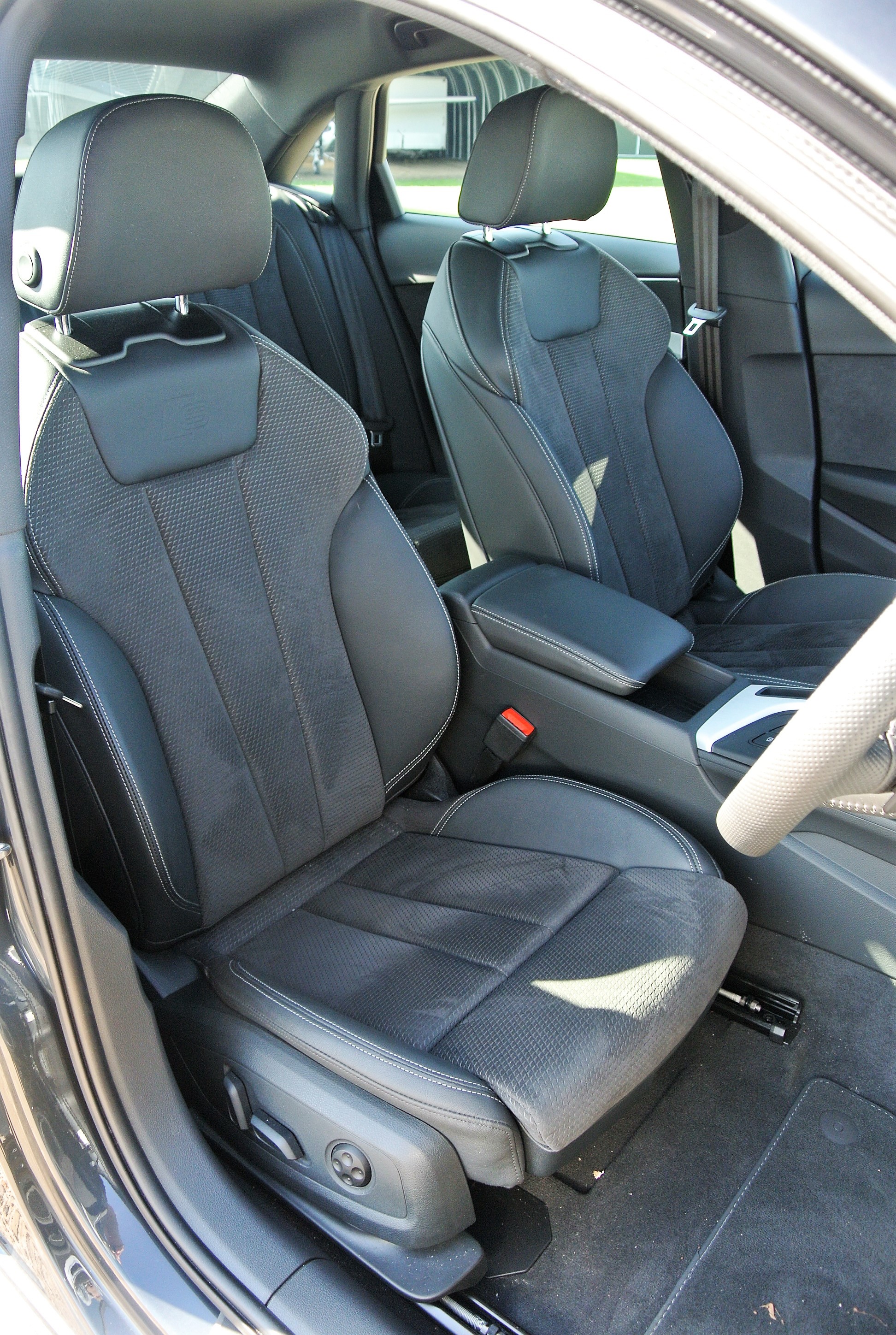
The soft-touch dashboard is laid out logically and contains the ultra-flexible viewing facility that can minimise the electronic but conventional dials layout to one that concentrates on either driving status, or sat-nav mapping. A head-up display means that driver distraction from the road ahead is minimised. The majority of the minor controls, whether clustered on the steering-wheel spokes, the column stalks, or the neatly contained switchgear, follow the broader VW Group pattern, by which ease of operation and reduced complexity are primary tenets. Audi’s intentions are clear: to make the A4 as driver familiar as possible, within the shortest time. It all works beautifully.
Powered by the familiar 1,968cc, four-cylinder, turbo-diesel engine, its banner achievement is the remarkably low CO2 emissions, which can start from an econo-car level of 101g/km. The wider tyres and open-spoked alloys of the test car raise it to 107g/km, which equates to £145 in year one but £140 annually thereafter for road tax. It makes the high-end rivals from other brands look decidedly over-rated. Delivering 187bhp and a whopping 295lbs ft of torque between 1,750-3,000rpm, it is not short on verve.
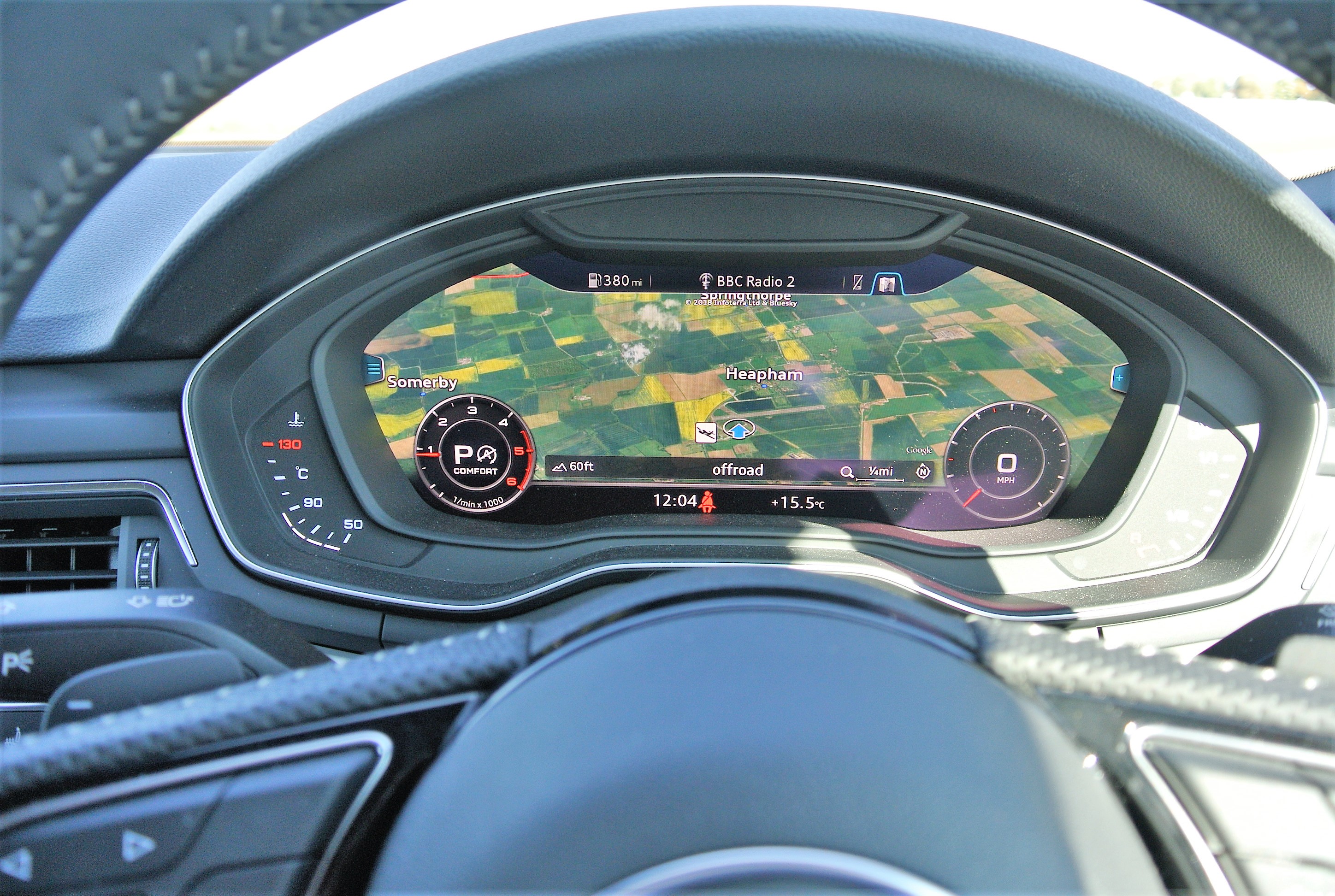
Driving through a seven-speed, twin-clutch, automated-manual gearbox (complete with steering wheel paddles), the A4 scorches from 0-60mph in a mere 7.4s and, given an appropriate stretch of German autobahn, it will clock an equally remarkable 147mph, which gives further proof of its air-piercing potential. However, diesel’s superior frugality is proven with a WLTP figure of 68.9mpg, which is achievable, although a mixed bag of motoring conditions means that a still respectable 55mpg is the norm. They are exceptional figures, especially for a car that tips the scales just 30kgs shy of 1.5 tonnes.
The driving experience is truly excellent. Conventionally sprung by coils all-round, the car’s directional stability is faultless and confidence-inspiring. The well-weighted power steering provides glitch-free and fluent cornering agility, while the perfectly-balanced disc brakes provide assured stopping power. However, as mentioned in the title of this story, it is not perfect.
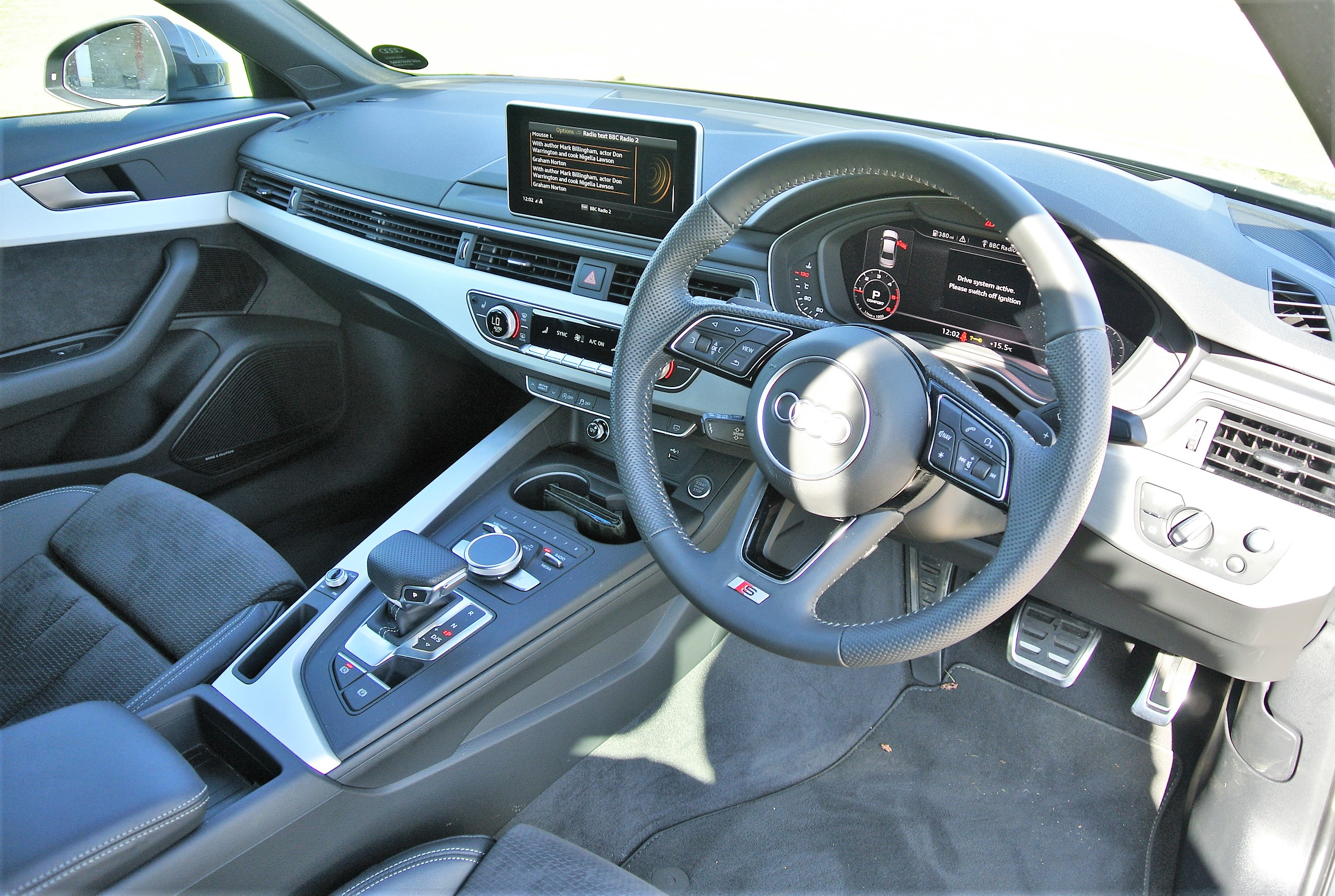
The chassis adjustability afforded by the Group platform, which can be tailored through four settings, remains jittery, even when Comfort is dialled-in. It is noticeably nuggety in Sport mode but there is insufficient differentiation with the less focused settings. As a result, the A4’s suspension can crash uncomfortably on B-roads, while relying heavily on its array of electronic stability and traction controls even on some A-roads. While I am sure that the A4 will drive with aplomb on Germany’s roads network, the UK’s specifically bad and mixed offerings make you wish for something suppler and more resilient.
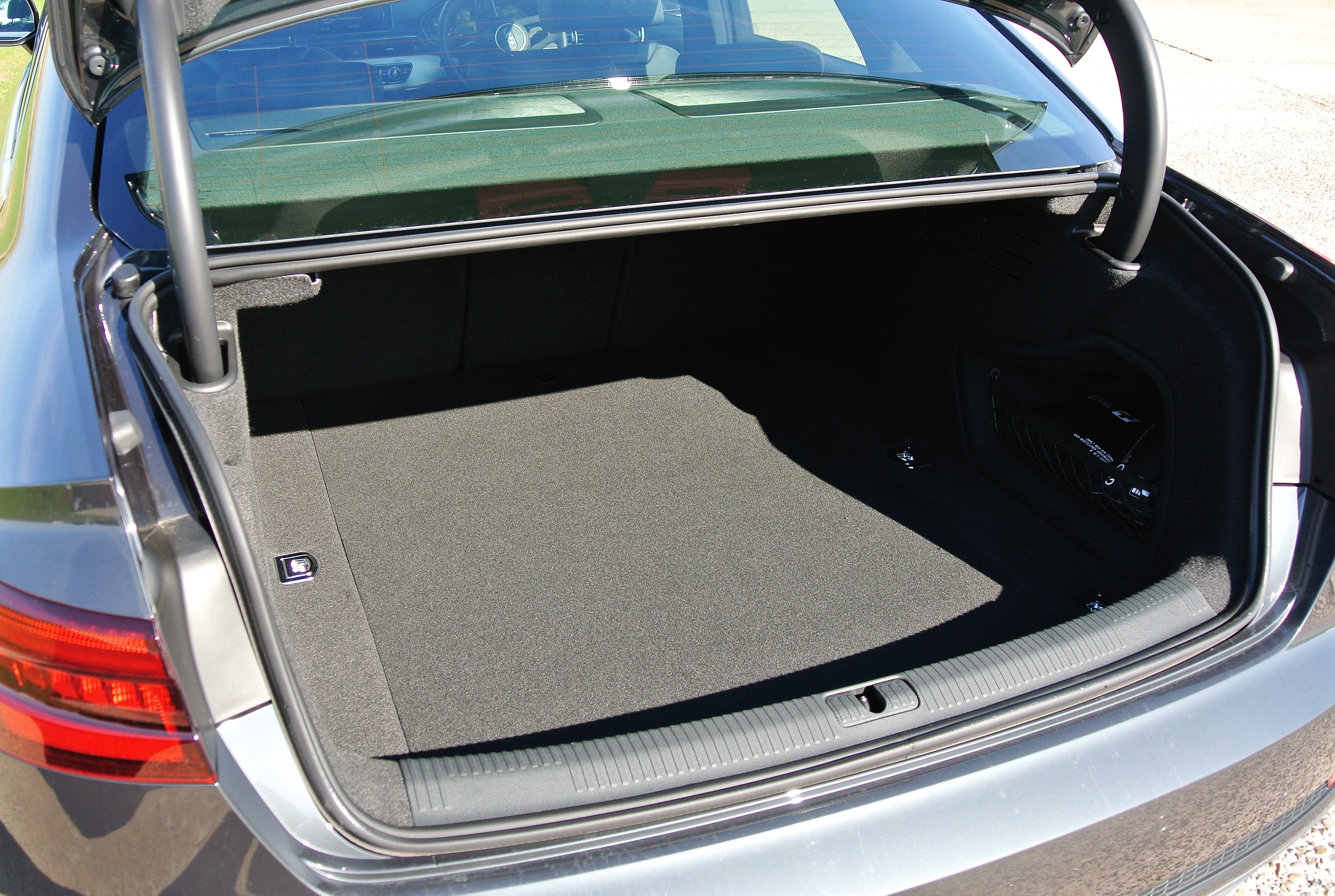
There is no denying the impeccable quality portrayed by the Audi A4. It may be ‘mainstream fodder’ to the company car sector but it exudes an air of high-quality insouciance regardless. Every aspect, from the shut of the passenger doors to the accommodating 465-litres of its roomy boot, which can be extended to 965-litres, when the rear seatbacks are flopped forwards, oozes premium grade superiority. Even its adaptable LED headlamps (£650 extra cost; of which I am not normally a fan) work their glare-free, full-beam, nocturnal magic with impunity.